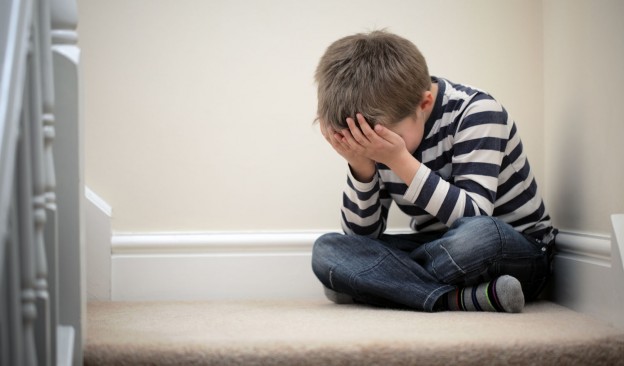
Products, Resources 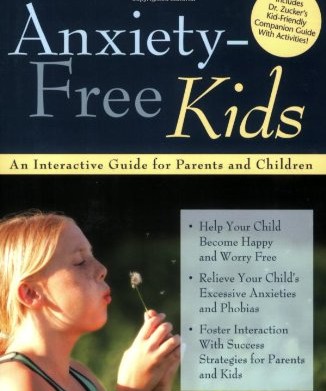 Anxiety-Free Kids was highly recommended to me by a child psychologist who uses it in her practice. The first 167 pages of the book are written for adults, a step-by-step guide for applying principles of Cognitive-Behavioral Therapy (CBT) to overcome anxiety. Then there is a removable 84-page section written for children, which is filled with exercises to change the way children think about their feelings. The advice is easy to read, well-researched and scientifically sound. Some of the ideas, such as making note cards for positive self-talk, can be implemented quickly at home.
However, it was difficult for me to translate other parts in a way that made sense to my developmentally delayed son. My son benefited the most from seeing me model relaxation techniques, and not so much from lengthy explanations and self-analysis.
Anxiety-Free Kids was highly recommended to me by a child psychologist who uses it in her practice. The first 167 pages of the book are written for adults, a step-by-step guide for applying principles of Cognitive-Behavioral Therapy (CBT) to overcome anxiety. Then there is a removable 84-page section written for children, which is filled with exercises to change the way children think about their feelings. The advice is easy to read, well-researched and scientifically sound. Some of the ideas, such as making note cards for positive self-talk, can be implemented quickly at home.
However, it was difficult for me to translate other parts in a way that made sense to my developmentally delayed son. My son benefited the most from seeing me model relaxation techniques, and not so much from lengthy explanations and self-analysis.
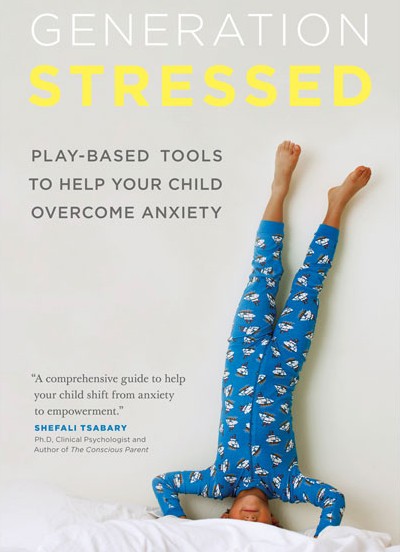 Michele Kambolis makes a strong case for play-based CBT. She explains that play is the natural language for children, so it can only strengthen the lessons of CBT. Most of the activities outlined in the book seem like typical CBT exercises to me, but when they are brought out of the clinic and into the home, then combined with a playful attitude, the potential for learning soars. Because this method meets the child at his or her unique developmental level, it is ideal for children with special needs.
Michele Kambolis makes a strong case for play-based CBT. She explains that play is the natural language for children, so it can only strengthen the lessons of CBT. Most of the activities outlined in the book seem like typical CBT exercises to me, but when they are brought out of the clinic and into the home, then combined with a playful attitude, the potential for learning soars. Because this method meets the child at his or her unique developmental level, it is ideal for children with special needs.
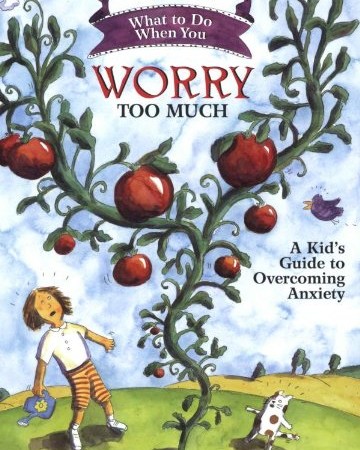 What to Do When You Worry Too Much is one title in the American Psychological Association’s series of “What-to-Do Guides for Kids.” It has nine brief chapters, each with at least one simple activity, such as drawing something that worries the child. The purpose of each chapter is to break down one concept of CBT, such as positive self-talk. Many chapters use metaphors, such as a “worry bully,” and comparisons, such as comparing worries to a tomato plant, so these ideas may be difficult to grasp for literal thinkers.
What to Do When You Worry Too Much is one title in the American Psychological Association’s series of “What-to-Do Guides for Kids.” It has nine brief chapters, each with at least one simple activity, such as drawing something that worries the child. The purpose of each chapter is to break down one concept of CBT, such as positive self-talk. Many chapters use metaphors, such as a “worry bully,” and comparisons, such as comparing worries to a tomato plant, so these ideas may be difficult to grasp for literal thinkers.
 This workbook has 55 family activities that adhere to the principles of CBT. Each activity has clear, step-by-step instructions, and many activities can be modified slightly for children with special needs. Activities are grouped by type, so there’s a whole chapter on breathing exercises and another on guided imagery. With its practical, hands-on approach, it’s ideal for families that want to cut to the chase and get to work.
This workbook has 55 family activities that adhere to the principles of CBT. Each activity has clear, step-by-step instructions, and many activities can be modified slightly for children with special needs. Activities are grouped by type, so there’s a whole chapter on breathing exercises and another on guided imagery. With its practical, hands-on approach, it’s ideal for families that want to cut to the chase and get to work.
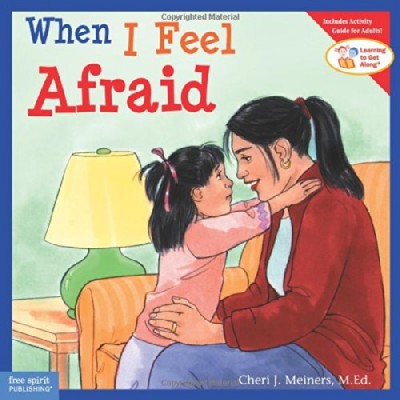 Cheri Meiners is the author of the “Learning to Get Along” series of children’s books, written to support social and emotional development in young children. This title in the series offers a comprehensive approach to childhood fears and anxiety. Written in the first person from a child’s perspective, the book starts by explaining possible causes for anxiety and how anxiety feels. Then a dozen strategies to reduce anxiety and increase a sense of security are described. The warm, detailed illustrations invite conversations on sensitive subjects, and the simple language makes the message accessible to all children.
Cheri Meiners is the author of the “Learning to Get Along” series of children’s books, written to support social and emotional development in young children. This title in the series offers a comprehensive approach to childhood fears and anxiety. Written in the first person from a child’s perspective, the book starts by explaining possible causes for anxiety and how anxiety feels. Then a dozen strategies to reduce anxiety and increase a sense of security are described. The warm, detailed illustrations invite conversations on sensitive subjects, and the simple language makes the message accessible to all children.
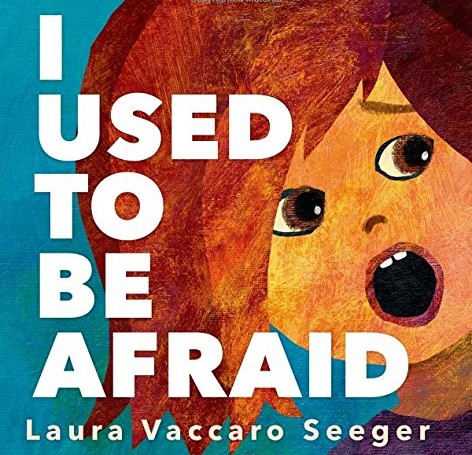 In this picture book, Seeger presents seven common childhood fears in the past tense, following the pattern of, “I used to be afraid of ____ ...but not anymore!” Each fear is accompanied first by an illustration showing a child looking anxious or fearful, then by an illustration showing the beauty of the thing that is feared. For example, the child is cowering under the covers in the dark, but on the next page, she is outdoors with her dog gazing happily at the moon and stars. The book’s lesson is that fear is temporary. We can all learn how to enjoy things that may initially provoke anxiety. With its engaging pictures and use of cut-outs, this book is perfect for opening a discussion with a young child.
In this picture book, Seeger presents seven common childhood fears in the past tense, following the pattern of, “I used to be afraid of ____ ...but not anymore!” Each fear is accompanied first by an illustration showing a child looking anxious or fearful, then by an illustration showing the beauty of the thing that is feared. For example, the child is cowering under the covers in the dark, but on the next page, she is outdoors with her dog gazing happily at the moon and stars. The book’s lesson is that fear is temporary. We can all learn how to enjoy things that may initially provoke anxiety. With its engaging pictures and use of cut-outs, this book is perfect for opening a discussion with a young child.
6 Books About Anxiety For Families With Special Needs
Child anxiety is a widely misunderstood condition, especially when the child also has developmental delays. Anxiety doesn’t always look like anxiety. Sometimes it appears as:- Someone who seems cheerful and hard-working at school or work, but has meltdowns upon arriving at home.
- Someone who acts out at school, but becomes calm at home.
- A child who hits a parent and then immediately seeks a hug from the same parent.
- A child who sits quietly at his school desk, but won’t pick up a pencil to do an assignment.
- A child who does not initiate social contact with other children, but may join a game already in progress.
- A child who shuts down physically and emotionally when a situation becomes too challenging.
1. Anxiety-Free Kids by Bonnie Zucker
 Anxiety-Free Kids was highly recommended to me by a child psychologist who uses it in her practice. The first 167 pages of the book are written for adults, a step-by-step guide for applying principles of Cognitive-Behavioral Therapy (CBT) to overcome anxiety. Then there is a removable 84-page section written for children, which is filled with exercises to change the way children think about their feelings. The advice is easy to read, well-researched and scientifically sound. Some of the ideas, such as making note cards for positive self-talk, can be implemented quickly at home.
However, it was difficult for me to translate other parts in a way that made sense to my developmentally delayed son. My son benefited the most from seeing me model relaxation techniques, and not so much from lengthy explanations and self-analysis.
Anxiety-Free Kids was highly recommended to me by a child psychologist who uses it in her practice. The first 167 pages of the book are written for adults, a step-by-step guide for applying principles of Cognitive-Behavioral Therapy (CBT) to overcome anxiety. Then there is a removable 84-page section written for children, which is filled with exercises to change the way children think about their feelings. The advice is easy to read, well-researched and scientifically sound. Some of the ideas, such as making note cards for positive self-talk, can be implemented quickly at home.
However, it was difficult for me to translate other parts in a way that made sense to my developmentally delayed son. My son benefited the most from seeing me model relaxation techniques, and not so much from lengthy explanations and self-analysis.
2. Generation Stressed: Play-Based Tools To Help Your Child Overcome Anxiety by Michele Kambolis
 Michele Kambolis makes a strong case for play-based CBT. She explains that play is the natural language for children, so it can only strengthen the lessons of CBT. Most of the activities outlined in the book seem like typical CBT exercises to me, but when they are brought out of the clinic and into the home, then combined with a playful attitude, the potential for learning soars. Because this method meets the child at his or her unique developmental level, it is ideal for children with special needs.
Michele Kambolis makes a strong case for play-based CBT. She explains that play is the natural language for children, so it can only strengthen the lessons of CBT. Most of the activities outlined in the book seem like typical CBT exercises to me, but when they are brought out of the clinic and into the home, then combined with a playful attitude, the potential for learning soars. Because this method meets the child at his or her unique developmental level, it is ideal for children with special needs.
3. What to Do When You Worry Too Much: A Kid’s Guide to Overcoming Anxiety by Dawn Huebner
 What to Do When You Worry Too Much is one title in the American Psychological Association’s series of “What-to-Do Guides for Kids.” It has nine brief chapters, each with at least one simple activity, such as drawing something that worries the child. The purpose of each chapter is to break down one concept of CBT, such as positive self-talk. Many chapters use metaphors, such as a “worry bully,” and comparisons, such as comparing worries to a tomato plant, so these ideas may be difficult to grasp for literal thinkers.
What to Do When You Worry Too Much is one title in the American Psychological Association’s series of “What-to-Do Guides for Kids.” It has nine brief chapters, each with at least one simple activity, such as drawing something that worries the child. The purpose of each chapter is to break down one concept of CBT, such as positive self-talk. Many chapters use metaphors, such as a “worry bully,” and comparisons, such as comparing worries to a tomato plant, so these ideas may be difficult to grasp for literal thinkers.
4. The Relaxation and Stress Reduction Workbook for Kids by Lawrence Shapiro and Robin Sprague
 This workbook has 55 family activities that adhere to the principles of CBT. Each activity has clear, step-by-step instructions, and many activities can be modified slightly for children with special needs. Activities are grouped by type, so there’s a whole chapter on breathing exercises and another on guided imagery. With its practical, hands-on approach, it’s ideal for families that want to cut to the chase and get to work.
This workbook has 55 family activities that adhere to the principles of CBT. Each activity has clear, step-by-step instructions, and many activities can be modified slightly for children with special needs. Activities are grouped by type, so there’s a whole chapter on breathing exercises and another on guided imagery. With its practical, hands-on approach, it’s ideal for families that want to cut to the chase and get to work.
5. When I Feel Afraid by Cheri Meiners
 Cheri Meiners is the author of the “Learning to Get Along” series of children’s books, written to support social and emotional development in young children. This title in the series offers a comprehensive approach to childhood fears and anxiety. Written in the first person from a child’s perspective, the book starts by explaining possible causes for anxiety and how anxiety feels. Then a dozen strategies to reduce anxiety and increase a sense of security are described. The warm, detailed illustrations invite conversations on sensitive subjects, and the simple language makes the message accessible to all children.
Cheri Meiners is the author of the “Learning to Get Along” series of children’s books, written to support social and emotional development in young children. This title in the series offers a comprehensive approach to childhood fears and anxiety. Written in the first person from a child’s perspective, the book starts by explaining possible causes for anxiety and how anxiety feels. Then a dozen strategies to reduce anxiety and increase a sense of security are described. The warm, detailed illustrations invite conversations on sensitive subjects, and the simple language makes the message accessible to all children.
6. I Used To Be Afraid by Laura Vaccaro Seeger
 In this picture book, Seeger presents seven common childhood fears in the past tense, following the pattern of, “I used to be afraid of ____ ...but not anymore!” Each fear is accompanied first by an illustration showing a child looking anxious or fearful, then by an illustration showing the beauty of the thing that is feared. For example, the child is cowering under the covers in the dark, but on the next page, she is outdoors with her dog gazing happily at the moon and stars. The book’s lesson is that fear is temporary. We can all learn how to enjoy things that may initially provoke anxiety. With its engaging pictures and use of cut-outs, this book is perfect for opening a discussion with a young child.
In this picture book, Seeger presents seven common childhood fears in the past tense, following the pattern of, “I used to be afraid of ____ ...but not anymore!” Each fear is accompanied first by an illustration showing a child looking anxious or fearful, then by an illustration showing the beauty of the thing that is feared. For example, the child is cowering under the covers in the dark, but on the next page, she is outdoors with her dog gazing happily at the moon and stars. The book’s lesson is that fear is temporary. We can all learn how to enjoy things that may initially provoke anxiety. With its engaging pictures and use of cut-outs, this book is perfect for opening a discussion with a young child. 


